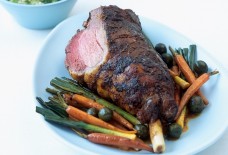How Backgammon, or Tawla, Became Popular in the Arab World
By Evan Ploeckelman / Arab America Contributing Writer
Tawla, Arabic for backgammon, is arguably the most popular board game in the Arab world, with people idling for entire afternoons with family or at cafes playing the game. Backgammon, however, has not always been a staple of Arabs. In fact, it has its origins in a number of other cultures in the periphery of the Arab World.
History of Backgammon
The first known game to resemble Backgammon was invented by the ancient Sumerians. While we do not know if the rules they played by resemble the modern rules, we do have evidence of similar-looking boards and dice that were carved out of bones. While not definitively proven, the Royal Game of Ur, also played in ancient Sumer, may be a predecessor to modern Backgammon. However, this game has very different rules compared to Tawla.
The game had been borrowed into a variety of different ancient cultures. It was first borrowed by the Egyptians, who played a potential variety of the game called senet. The Persians also borrowed this game and play a game similar to Backgammon today called nard. It was also borrowed by the Romans, who called the game tabula and established most of the modern rules. The game gained the largest amount of fame in the Byzantine empire, where it was called tavla. It was taken up by the Ottomans after their conquest of the Byzantines, who made the game an essential part of Turkish culture. Additionally, the game was extremely popular throughout the Ottoman Empire, especially in Mesopotamia and the Levant, where, even after the end of the Ottoman Empire, the game remained popular.
Popularity of Backgammon
But why exactly did the game remain popular? While a number of other games could have taken Backgammon’s place in the Arab World, its specific characteristics aided it in its longevity. For one, compared to many card games or other board games like chess, Backgammon requires less strategy, as winning or losing can often depend on what dice rolls you get. Furthermore, you do not need to pay much attention to actually play the game, meaning that you can talk with others while you play without becoming too distracted. This has helped it gain popularity world-wide. In fact, today, you can play backgammon online. You can play both against the computer, which is a great way to learn the game, and as you master it, you can challenge others too. Lastly, the games can take a long time, providing ample opportunity to spend an idle couple of hours.
This is part of the reason why Backgammon became popular in places like coffeehouses and cafes. These places are typically where people go to relax and interact with other people. Backgammon, due to its relatively relaxed nature, was a natural fit to play in coffeehouses while passing the time.
However, one interesting thing about Backgammon in the Arab World is the prevalence of betting. The Quran explicitly banns betting, and with a majority of Arabs in the region practicing Islam, one would think this would impact the popularity of the game, and the popularity of this practice, somewhat. However, it is a prevalent practice in many places, such as this cafe in Damascus.
Differences in the Arab World
Some of the rules Arabs play by are different than in the west. Many have not formally learned the rules to Backgammon or particular strategies, instead developing them through experience or learning from others. Additionally, they may use different terms for different plays or dice rolls. For example, a shesh besh is when a player rolls a 6 and a 5, and comes from the word for six in Hebrew and Persian, shesh, and the word for 5 in Turkish, besh. In fact, the phrase is so popular in some regions that the game itself is called shesh besh. Other times, the numbers are called out in either Turkish (bir, iki, üç, dört, etc.) or Persian (yek, do, se, chahar, etc.), an influence leftover from the Ottomans. The doubling cube, a feature of western versions of backgammon, is also less widely used in the Arab World. There are also different game variations, such as mahbouseh, where a piece is held captive, magribieh, and yehud.
While Backgammon is played slightly differently in the Arab World compared to other countries, it still manages to be one of the most prolific board games in the region along with a link to other regional cultures and cultures around the globe. Interestingly enough, the diversity in players is reflected in the game itself; one player notes, “In 25 years of playing, I’ve never played the same game twice, which is more than you can say for most things in life.”
Please check out our blog here!









